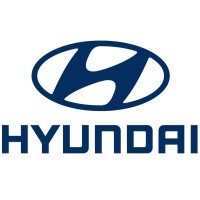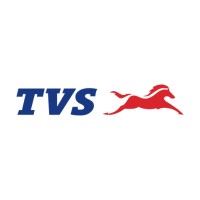Company Details
toyota
31,153
2,230,806
3361
global.toyota
0
TOY_1082022
In-progress

Toyota Motor Corporation Company CyberSecurity Posture
global.toyotaToyota Motor Corporation is a global automotive industry leader manufacturing vehicles in 27 countries or regions and marketing the company’s products in over 170 countries and regions. Founded in 1937 and headquartered in Toyota City, Japan, Toyota Motor Corporation employs nearly 350,000 people globally.
Company Details
toyota
31,153
2,230,806
3361
global.toyota
0
TOY_1082022
In-progress
Between 700 and 749

 TMC Global Score (TPRM)
TMC Global Score (TPRM)XXXX

Description: A data breach revealed by Toyota Motor Corporation exposed information on more than 2 million consumers over ten years. A misconfigured database that was open to everyone without authentication was the source of the data breach. The security breach impacted customers who used the company’s T-Connect G-Link, G-Link Lite, or G-BOOK services. Exposed records include customer names, credit card data, and phone numbers have not been compromised as they weren’t stored in the exposed database.
Description: Japanese automaker Toyota had to suspend its domestic factory operations after Kojima Industries, which supplies the plastic parts and electronic components to the company was targeted in a cyber attack. The attack resulted in a halt at its 14 plants in Japan which contribute about a third of its global production.
Description: Toyota was listed among over 50 global corporations targeted in a large-scale data theft campaign by the **Scattered LAPSUS$ Hunters** group. The attackers exploited vulnerabilities in **Salesforce customer environments**, including weak OAuth protections and inadequate two-factor authentication, to exfiltrate **multiple terabytes of sensitive data**. The stolen records reportedly include **personally identifiable information (PII)** such as driver’s licenses, dates of birth, social security numbers, and other regulated fields. The group claims to hold **strategic corporate data** that could undermine Toyota’s market position, with sample leaks ranging from single-digit gigabytes to hundreds of gigabytes per victim. The threat actors set a **public disclosure deadline (October 10, 2025)**, demanding ransom payments under the threat of full data exposure. While Toyota has not confirmed the authenticity of the leaked samples, the breach aligns with a year-long campaign targeting high-profile enterprises across industries, raising severe compliance risks under **GDPR, CCPA, and other privacy regulations**. The attack’s scale and the nature of the exfiltrated data suggest **profound operational, financial, and reputational consequences** for the automaker.
Description: Toyota Motor Corp. disclosed the discovery of yet another data breach, this time involving the leakage of 260,000 automobile owners' personal data over the course of two improperly setup cloud services. After revealing earlier in the month that the data of 2.15 million customers was accessible to anyone online for more than 10 years, the automaker looked into the cloud features and made this revelation. It should be assumed that all of this data was repeatedly hacked given how long it was available. Information about customers, including names, contact information (including phone and email addresses), and vehicle identification numbers, may have been externally available.
Description: Toyota was affected by a cyber-attack by an unauthorized access from a third party. Toyota subsidiary Auto Parts Manufacturing Mississippi has revealed a ransomware attack where some financial and customer data was stolen and leaked, which is a strategy used by ransomware vendors to increase the leverage with which they can demand payment.
Description: In June 2025, the Qilin ransomware group targeted an automotive manufacturer, highlighting a strategic shift toward high-impact targets. The attack methodology demonstrated expertise in identifying vulnerabilities within interconnected systems, focusing on entities critical to global supply chains. This sophisticated approach compromised essential nodes, triggering widespread operational disruptions. The group's technical prowess, incorporating advanced reconnaissance and persistent access mechanisms, ensured prolonged network infiltration, rendering initial detection and remediation attempts ineffective.


Toyota Motor Corporation has 426.32% more incidents than the average of same-industry companies with at least one recorded incident.
Toyota Motor Corporation has 212.5% more incidents than the average of all companies with at least one recorded incident.
Toyota Motor Corporation reported 2 incidents this year: 1 cyber attacks, 1 ransomware, 0 vulnerabilities, 0 data breaches, compared to industry peers with at least 1 incident.
TMC cyber incidents detection timeline including parent company and subsidiaries

Toyota Motor Corporation is a global automotive industry leader manufacturing vehicles in 27 countries or regions and marketing the company’s products in over 170 countries and regions. Founded in 1937 and headquartered in Toyota City, Japan, Toyota Motor Corporation employs nearly 350,000 people globally.


Hyundai Motor India Limited (HMIL) is a wholly-owned subsidiary of Hyundai Motor Company (HMC). HMIL is India’s first smart mobility solutions provider and the number one car exporter since its inception in India. It currently has 12 car models across segments GRAND i10 NIOS, All New i20, i20 N Line

A Marcopolo S.A é uma empresa brasileira fundada em 1949 que participa ativamente no desenvolvimento de soluções para a mobilidade nos principais mercados mundiais. Atualmente com 11 unidades fabris no exterior, é composta por empresas dedicadas à fabricação de ônibus, micro-ônibus e peças, soluções

Li Auto Inc. is a leader in China's new energy vehicle market. The Company designs, develops, manufactures, and sells premium smart electric vehicles. Its mission is: Create a Mobile Home, Create Happiness (创造移动的家,创造幸福的家). Through innovations in product, technology, and business model, the Company p

In 1903, out of a small shed in Milwaukee, Wisconsin, four young men lit a cultural wildfire that would grow and spread across geographies and generations. Their innovation and imagination for what was possible on two wheels sparked a transportation revolution and lifestyle that would make Harley-Da

Ashok Leyland vehicles have built a reputation for reliability and ruggedness. The 5,00,000 vehicles we have put on the roads have considerably eased the additional pressure placed on road transportation in independent India. In the populous Indian metros, four out of the five State Transport Und
Nissan Motor Corporation is a global car manufacturer that sells a full line of vehicles under the Nissan and INFINITI brands. Nissan’s global headquarters in Yokohama, Japan, manages operations in four regions: Japan-ASEAN, China, Americas, and AMIEO (Africa, Middle East, India, Europe & Oceania).

Founded in 1975, Motherson is one of the world’s leading auto component makers, supplying OEMs globally from over 400 facilities in 44 countries spread across five continents with over 190,000 employees. Within the automotive industry, it is one of the leading global manufacturers of exterior rear

TVS Motor Company is a reputed two and three-wheeler manufacturer globally, championing progress through Mobility with a focus on sustainability. Rooted in our 100-year legacy of Trust, Value, and Passion for Customers and Exactness, we take pride in making internationally aspirational products of t
At Cummins, we empower everyone to grow their careers through meaningful work, building inclusive and equitable teams, coaching, development and opportunities to make a difference. Across our entire organization, you'll find engineers, developers, and technicians who are innovating, designing, testi
.png)
On October 3, 2025, Hackread.com published an in-depth report in which hackers claimed to have stolen 989 million records from 39 major...
In a significant cybersecurity breach that has shaken the travel and business sectors, Qantas Airways has confirmed that sensitive data from...
The cybersecurity landscape has been shaken by the emergence of Trinity of Chaos, a sophisticated ransomware collective that has launched a...
Australia's largest telco is the latest company to become embroiled in a wide-ranging extortion hack on software company Salesforce,...
A cybercrime collective known as Scattered LAPSUS$ Hunters has launched a new data leak site on the dark web, claiming it holds nearly one...
Production employees at JLR's plant in Halewood, England, were told to remain at home and not report for work while the automaker deals with...
Toyota data breach: Threat actors allege the systems of Toyota India have been compromised, exposing employee and company data.
Toyota Motor Corporation, a global leader in automotive manufacturing. Known for its relentless focus on quality, safety, and innovation,...
With the passing of production guru Nampachi Hayashi, Toyota lost a huge link in its corporate culture.

Explore insights on cybersecurity incidents, risk posture, and Rankiteo's assessments.
The official website of Toyota Motor Corporation is http://www.toyota-global.com/.
According to Rankiteo, Toyota Motor Corporation’s AI-generated cybersecurity score is 715, reflecting their Moderate security posture.
According to Rankiteo, Toyota Motor Corporation currently holds 0 security badges, indicating that no recognized compliance certifications are currently verified for the organization.
According to Rankiteo, Toyota Motor Corporation is not certified under SOC 2 Type 1.
According to Rankiteo, Toyota Motor Corporation does not hold a SOC 2 Type 2 certification.
According to Rankiteo, Toyota Motor Corporation is not listed as GDPR compliant.
According to Rankiteo, Toyota Motor Corporation does not currently maintain PCI DSS compliance.
According to Rankiteo, Toyota Motor Corporation is not compliant with HIPAA regulations.
According to Rankiteo,Toyota Motor Corporation is not certified under ISO 27001, indicating the absence of a formally recognized information security management framework.
Toyota Motor Corporation operates primarily in the Motor Vehicle Manufacturing industry.
Toyota Motor Corporation employs approximately 31,153 people worldwide.
Toyota Motor Corporation presently has no subsidiaries across any sectors.
Toyota Motor Corporation’s official LinkedIn profile has approximately 2,230,806 followers.
Toyota Motor Corporation is classified under the NAICS code 3361, which corresponds to Motor Vehicle Manufacturing.
No, Toyota Motor Corporation does not have a profile on Crunchbase.
Yes, Toyota Motor Corporation maintains an official LinkedIn profile, which is actively utilized for branding and talent engagement, which can be accessed here: https://www.linkedin.com/company/toyota.
As of November 27, 2025, Rankiteo reports that Toyota Motor Corporation has experienced 6 cybersecurity incidents.
Toyota Motor Corporation has an estimated 12,402 peer or competitor companies worldwide.
Incident Types: The types of cybersecurity incidents that have occurred include Breach, Ransomware, Data Leak and Cyber Attack.
Detection and Response: The company detects and responds to cybersecurity incidents through an communication strategy with threat actors demand victims verify corporate emails to establish real-time communication for ransom negotiations...
Title: Cyber Attack on Toyota Supplier Kojima Industries
Description: Japanese automaker Toyota had to suspend its domestic factory operations after Kojima Industries, which supplies the plastic parts and electronic components to the company was targeted in a cyber attack. The attack resulted in a halt at its 14 plants in Japan which contribute about a third of its global production.
Type: Cyber Attack
Title: Toyota Ransomware Attack
Description: Toyota subsidiary Auto Parts Manufacturing Mississippi was affected by a ransomware attack where some financial and customer data was stolen and leaked.
Type: Ransomware
Attack Vector: Unauthorized access from a third party
Motivation: Financial gain
Title: Toyota Data Breach
Description: A data breach revealed by Toyota Motor Corporation exposed information on more than 2 million consumers over ten years. A misconfigured database that was open to everyone without authentication was the source of the data breach. The security breach impacted customers who used the company’s T-Connect G-Link, G-Link Lite, or G-BOOK services. Exposed records include customer names, credit card data, and phone numbers have not been compromised as they weren’t stored in the exposed database.
Type: Data Breach
Attack Vector: Misconfigured Database
Vulnerability Exploited: Open database without authentication
Title: Toyota Data Breach Involving 260,000 Automobile Owners' Personal Data
Description: Toyota Motor Corp. disclosed the discovery of yet another data breach, this time involving the leakage of 260,000 automobile owners' personal data over the course of two improperly setup cloud services. After revealing earlier in the month that the data of 2.15 million customers was accessible to anyone online for more than 10 years, the automaker looked into the cloud features and made this revelation. It should be assumed that all of this data was repeatedly hacked given how long it was available. Information about customers, including names, contact information (including phone and email addresses), and vehicle identification numbers, may have been externally available.
Type: Data Breach
Attack Vector: Improperly setup cloud services
Vulnerability Exploited: Cloud misconfiguration
Title: Qilin Ransomware Group's Surge in High-Value Targeted Attacks
Description: The Qilin ransomware group emerged as a dominant threat actor in June 2025, orchestrating an unprecedented surge in high-value targeted attacks across multiple sectors and geographical regions. This escalation represents a fundamental transformation in ransomware operations, moving beyond traditional financial motivations to encompass strategic and political objectives that threaten global infrastructure stability.
Date Detected: June 2025
Type: Ransomware
Attack Vector: Vulnerabilities within interconnected systemsAdvanced reconnaissance techniquesPersistent access mechanisms
Threat Actor: Qilin Ransomware Group
Motivation: Strategic objectivesPolitical objectivesReputation damage
Title: Scattered LAPSUS$ Hunters Data-Theft Campaign Exploiting Salesforce Products
Description: The hacking and cybercrime collective Scattered LAPSUS$ Hunters published a dedicated online portal claiming responsibility for a wide-scale data-theft campaign involving the exploitation of Salesforce products. The group posted samples tied to over 50 corporate victims, including major global brands across automotive, retail, transportation, hospitality, and cloud SaaS. They claim to have exfiltrated 'multiple TBs' of data and 'near 1 billion records' containing sensitive PII (e.g., driver's licenses, SSNs, dates of birth). The group set a public disclosure deadline of October 10, 2025, threatening full data release unless victims comply. The campaign allegedly exploited weak OAuth protections, poor 2FA enforcement, and third-party integrations (e.g., Salesloft’s Drift/Drift). Victims span jurisdictions with strict privacy laws (GDPR, CCPA, HIPAA), and some have previously disclosed Salesforce-related breaches, while others were newly disclosed. The actors demand ransom payments in exchange for data deletion and offer litigation support to pressure compliance.
Type: Data Breach
Attack Vector: Exploitation of Salesforce Customer InstancesOAuth AbuseThird-Party App Compromises (e.g., Salesloft’s Drift/Drift)VPN Masking for ExfiltrationWeak 2FA Enforcement
Vulnerability Exploited: Poor OAuth ProtectionsLack of Multi-Factor Authentication (2FA) EnforcementThird-Party Integration Vulnerabilities (Salesforce-connected apps)
Threat Actor: Scattered LAPSUS$ Hunters
Motivation: Financial Gain (Ransom Extortion)Data Theft for Resale/LeveragePublic Disclosure ThreatsLitigation Support as Pressure Tactic
Common Attack Types: The most common types of attacks the company has faced is Cyber Attack.
Identification of Attack Vectors: The company identifies the attack vectors used in incidents through Salesforce Customer InstancesThird-Party Integrations (e.g. and Salesloft’s Drift/Drift)OAuth Abuse.

Systems Affected: 14 plants in Japan
Downtime: ['halt at its 14 plants in Japan']
Operational Impact: suspension of domestic factory operations

Data Compromised: Financial data, Customer data

Data Compromised: Customer names
Systems Affected: T-Connect G-LinkG-Link LiteG-BOOK

Data Compromised: Names, Contact information (phone and email addresses), Vehicle identification numbers

Systems Affected: Automotive manufacturersEnergy companiesMedical institutionsGovernment agenciesEntertainment venuesCritical infrastructure providers
Operational Impact: Widespread operational disruptions
Brand Reputation Impact: Reputation damage tactics

Data Compromised: Sensitive pii (driver’s licenses, social security numbers, dates of birth), Strategic corporate data (market position compromise risk), Raw records (regulated fields)
Systems Affected: Salesforce Customer InstancesThird-Party Integrations (e.g., Salesloft’s Drift/Drift)OAuth-Connected Apps
Brand Reputation Impact: High (Public Disclosure Threat, Global Brands Affected)
Legal Liabilities: Potential GDPR/CCPA/HIPAA ViolationsLitigation Risks (Threat Actors Offer Support to Pressure Compliance)
Identity Theft Risk: High (PII Exfiltrated)
Commonly Compromised Data Types: The types of data most commonly compromised in incidents are Financial Data, Customer Data, , Customer Names, , Names, Contact Information (Phone And Email Addresses), Vehicle Identification Numbers, , Pii (Driver’S Licenses, Ssns, Dates Of Birth), Strategic Corporate Data, Raw Regulated Records and .

Entity Name: Toyota
Entity Type: Corporation
Industry: Automotive
Location: Japan

Entity Name: Kojima Industries
Entity Type: Supplier
Industry: Automotive
Location: Japan

Entity Name: Auto Parts Manufacturing Mississippi
Entity Type: Subsidiary
Industry: Automotive
Location: Mississippi

Entity Name: Toyota Motor Corporation
Entity Type: Corporation
Industry: Automotive
Customers Affected: 2000000

Entity Name: Toyota Motor Corp.
Entity Type: Corporation
Industry: Automotive
Customers Affected: 260000

Industry: Automotive, Energy, Medical, Government, Entertainment, Critical Infrastructure
Location: United StatesColombiaUnited Arab EmiratesFrance

Entity Name: Toyota
Entity Type: Corporation
Industry: Automotive
Location: Global
Size: Large Enterprise

Entity Name: FedEx
Entity Type: Corporation
Industry: Transportation/Logistics
Location: Global
Size: Large Enterprise

Entity Name: Disney/Hulu
Entity Type: Corporation
Industry: Entertainment/Hospitality
Location: Global
Size: Large Enterprise

Entity Name: UPS
Entity Type: Corporation
Industry: Transportation/Logistics
Location: Global
Size: Large Enterprise

Entity Name: Aeroméxico
Entity Type: Corporation
Industry: Aviation/Transportation
Location: Mexico/Global
Size: Large Enterprise

Entity Name: Home Depot
Entity Type: Corporation
Industry: Retail
Location: Global
Size: Large Enterprise

Entity Name: Marriott
Entity Type: Corporation
Industry: Hospitality
Location: Global
Size: Large Enterprise

Entity Name: Walgreens
Entity Type: Corporation
Industry: Retail/Pharmacy
Location: Global
Size: Large Enterprise

Entity Name: Stellantis
Entity Type: Corporation
Industry: Automotive
Location: Global
Size: Large Enterprise

Entity Name: Qantas
Entity Type: Corporation
Industry: Aviation/Transportation
Location: Global
Size: Large Enterprise

Entity Name: Google AdSense
Entity Type: Subsidiary
Industry: Technology/Advertising
Location: Global
Size: Large Enterprise

Entity Name: Cisco
Entity Type: Corporation
Industry: Technology/Networking
Location: Global
Size: Large Enterprise

Entity Name: TransUnion
Entity Type: Corporation
Industry: Financial Services/Credit Reporting
Location: Global
Size: Large Enterprise

Communication Strategy: Threat actors demand victims verify corporate emails to establish real-time communication for ransom negotiations.

Type of Data Compromised: Financial data, Customer data

Type of Data Compromised: Customer names
Number of Records Exposed: 2000000
Personally Identifiable Information: customer names

Type of Data Compromised: Names, Contact information (phone and email addresses), Vehicle identification numbers
Number of Records Exposed: 260000
Personally Identifiable Information: NamesContact information (phone and email addresses)Vehicle identification numbers

Type of Data Compromised: Pii (driver’s licenses, ssns, dates of birth), Strategic corporate data, Raw regulated records
Number of Records Exposed: Near 1 billion
Sensitivity of Data: High (PII, Regulated Fields, Market-Sensitive Data)
Data Exfiltration: Confirmed (Multiple TBs Exfiltrated)
Personally Identifiable Information: Driver’s LicensesSocial Security NumbersDates of Birth

Data Exfiltration: True

Ransomware Strain: Qilin

Ransom Demanded: Implied (Payment for Data Deletion)
Data Exfiltration: Yes (Primary Tactics)

Regulations Violated: Potential GDPR (EU), CCPA (California), HIPAA (Healthcare Data, if applicable),
Legal Actions: Threat Actors Offer Litigation Support to Pressure Compliance
Ensuring Regulatory Compliance: The company ensures compliance with regulatory requirements through Threat Actors Offer Litigation Support to Pressure Compliance.

Source: ANY.RUN

Source: CyberInsider
Additional Resources: Stakeholders can find additional resources on cybersecurity best practices at and Source: ANY.RUN, and Source: CyberInsider.

Investigation Status: Ongoing (No Victim Confirmation of Leaked Data Authenticity as of Reporting)
Communication of Investigation Status: The company communicates the status of incident investigations to stakeholders through Threat actors demand victims verify corporate emails to establish real-time communication for ransom negotiations..

High Value Targets: Government Agencies, Global Brand Companies, Automotive Manufacturers, Energy Companies, Medical Institutions,
Data Sold on Dark Web: Government Agencies, Global Brand Companies, Automotive Manufacturers, Energy Companies, Medical Institutions,

Entry Point: Salesforce Customer Instances, Third-Party Integrations (E.G., Salesloft’S Drift/Drift), Oauth Abuse,
Reconnaissance Period: Over 1 Year (Campaign Spanning >12 Months)
High Value Targets: Pii Databases, Strategic Corporate Data,
Data Sold on Dark Web: Pii Databases, Strategic Corporate Data,

Root Causes: Weak Oauth Protections, Poor 2Fa Enforcement, Third-Party Integration Vulnerabilities, Vpn Exfiltration Masking,
Last Ransom Demanded: The amount of the last ransom demanded was Implied (Payment for Data Deletion).
Last Attacking Group: The attacking group in the last incident were an Qilin Ransomware Group and Scattered LAPSUS$ Hunters.
Most Recent Incident Detected: The most recent incident detected was on June 2025.
Most Significant Data Compromised: The most significant data compromised in an incident were financial data, customer data, , customer names, , Names, Contact information (phone and email addresses), Vehicle identification numbers, , Sensitive PII (Driver’s Licenses, Social Security Numbers, Dates of Birth), Strategic Corporate Data (Market Position Compromise Risk), Raw Records (Regulated Fields) and .
Most Significant System Affected: The most significant system affected in an incident were 14 plants in Japan and T-Connect G-LinkG-Link LiteG-BOOK and Automotive manufacturersEnergy companiesMedical institutionsGovernment agenciesEntertainment venuesCritical infrastructure providers and Salesforce Customer InstancesThird-Party Integrations (e.g., Salesloft’s Drift/Drift)OAuth-Connected Apps.
Most Sensitive Data Compromised: The most sensitive data compromised in a breach were Names, Vehicle identification numbers, customer data, Sensitive PII (Driver’s Licenses, Social Security Numbers, Dates of Birth), Strategic Corporate Data (Market Position Compromise Risk), Raw Records (Regulated Fields), financial data, customer names and Contact information (phone and email addresses).
Number of Records Exposed in Most Significant Breach: The number of records exposed in the most significant breach was 1.0B.
Highest Ransom Demanded: The highest ransom demanded in a ransomware incident was Implied (Payment for Data Deletion).
Most Significant Legal Action: The most significant legal action taken for a regulatory violation was Threat Actors Offer Litigation Support to Pressure Compliance.
Most Recent Source: The most recent source of information about an incident are CyberInsider and ANY.RUN.
Current Status of Most Recent Investigation: The current status of the most recent investigation is Ongoing (No Victim Confirmation of Leaked Data Authenticity as of Reporting).
Most Recent Reconnaissance Period: The most recent reconnaissance period for an incident was Over 1 Year (Campaign Spanning >12 Months).
.png)
Angular is a development platform for building mobile and desktop web applications using TypeScript/JavaScript and other languages. Prior to versions 19.2.16, 20.3.14, and 21.0.1, there is a XSRF token leakage via protocol-relative URLs in angular HTTP clients. The vulnerability is a Credential Leak by App Logic that leads to the unauthorized disclosure of the Cross-Site Request Forgery (XSRF) token to an attacker-controlled domain. Angular's HttpClient has a built-in XSRF protection mechanism that works by checking if a request URL starts with a protocol (http:// or https://) to determine if it is cross-origin. If the URL starts with protocol-relative URL (//), it is incorrectly treated as a same-origin request, and the XSRF token is automatically added to the X-XSRF-TOKEN header. This issue has been patched in versions 19.2.16, 20.3.14, and 21.0.1. A workaround for this issue involves avoiding using protocol-relative URLs (URLs starting with //) in HttpClient requests. All backend communication URLs should be hardcoded as relative paths (starting with a single /) or fully qualified, trusted absolute URLs.
Forge (also called `node-forge`) is a native implementation of Transport Layer Security in JavaScript. An Uncontrolled Recursion vulnerability in node-forge versions 1.3.1 and below enables remote, unauthenticated attackers to craft deep ASN.1 structures that trigger unbounded recursive parsing. This leads to a Denial-of-Service (DoS) via stack exhaustion when parsing untrusted DER inputs. This issue has been patched in version 1.3.2.
Forge (also called `node-forge`) is a native implementation of Transport Layer Security in JavaScript. An Integer Overflow vulnerability in node-forge versions 1.3.1 and below enables remote, unauthenticated attackers to craft ASN.1 structures containing OIDs with oversized arcs. These arcs may be decoded as smaller, trusted OIDs due to 32-bit bitwise truncation, enabling the bypass of downstream OID-based security decisions. This issue has been patched in version 1.3.2.
Suricata is a network IDS, IPS and NSM engine developed by the OISF (Open Information Security Foundation) and the Suricata community. Prior to versions 7.0.13 and 8.0.2, working with large buffers in Lua scripts can lead to a stack overflow. Users of Lua rules and output scripts may be affected when working with large buffers. This includes a rule passing a large buffer to a Lua script. This issue has been patched in versions 7.0.13 and 8.0.2. A workaround for this issue involves disabling Lua rules and output scripts, or making sure limits, such as stream.depth.reassembly and HTTP response body limits (response-body-limit), are set to less than half the stack size.
Suricata is a network IDS, IPS and NSM engine developed by the OISF (Open Information Security Foundation) and the Suricata community. In versions from 8.0.0 to before 8.0.2, a NULL dereference can occur when the entropy keyword is used in conjunction with base64_data. This issue has been patched in version 8.0.2. A workaround involves disabling rules that use entropy in conjunction with base64_data.

Get company history
















Every week, Rankiteo analyzes billions of signals to give organizations a sharper, faster view of emerging risks. With deeper, more actionable intelligence at their fingertips, security teams can outpace threat actors, respond instantly to Zero-Day attacks, and dramatically shrink their risk exposure window.
Identify exposed access points, detect misconfigured SSL certificates, and uncover vulnerabilities across the network infrastructure.
Gain visibility into the software components used within an organization to detect vulnerabilities, manage risk, and ensure supply chain security.
Monitor and manage all IT assets and their configurations to ensure accurate, real-time visibility across the company's technology environment.
Leverage real-time insights on active threats, malware campaigns, and emerging vulnerabilities to proactively defend against evolving cyberattacks.




